The CSSSC Archive: Collection Highlights
Some of the contents of the archive have been highlighted below:
The Samik Bandyopadhyay Archive
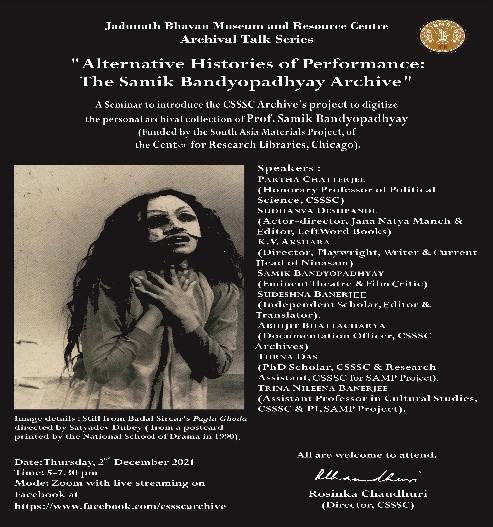
The archival project to digitize theatre critic and scholar Professor Samik Bandyopadhyay’s papers was begun at the CSSSC’s archives in December 2020 with a South Asia Materials Project grant. The veteran critic Samik Bandyopadhyay, born in 1941, had built a collection of 400 physical files on theatre, performance, politics and cinema in India from the 1950s onwards. The digitisation project at the CSSSC, focusing on the papers relating theatre and the performing arts, was completed by March 2022, along with a set of audio interviews with Prof. Bandyopadhyay. At completion, there were around 1700 catalogue entries spread across 14 categories: photographs, books, brochures, handbills, journals, leaflets, letters, manuscripts, cards, newspapers, notes, posters, scripts and tickets. When the project was nearing completion, in December 2021, an online panel discussion to disseminate the findings of the project was organised by the Jadunath Bhavan Museum and Resource Centre, which is a unit of the CSSSC. The speakers included eminent theatre personalities and academics such as K.V. Akshara (Ninasam), Sudhanva Deshpande (JANAM) and Prof. Partha Chatterjee, as well as Ms. Turna Das, who did the digitization and cataloguing, Ms. Sudeshna Banerjee (an independent scholar, who had taken care of the physical archive for years) and Dr. Trina Nileena Banerjee (principal investigator for the project). The webinar was titled “Alternative Histories of Performance: The Samik Bandyopadhyay Archive” and the link to the online discussion is appended below. A brief video preview for the archive was also created for the occasion to give the audience a visual sense of the range and diversity of the material that had been digitized.
The digitised files are available to interested scholars at the CSSSC’s Archives at both the Patuli campus and at JBMRC.
YouTube link to the webinar held in December 2021 titled “Alternative Histories of Performance”
Hitesranjan Sanyal Memorial Collection:
Centre’s Urban History Documentation Archive
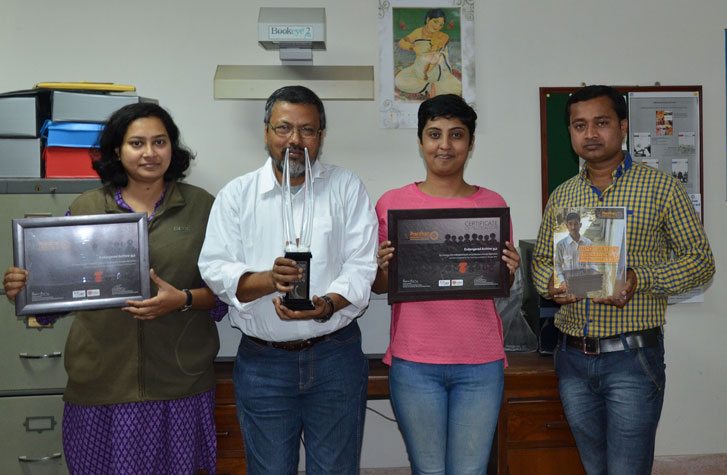
The digital archives of the Urban History Documentation Archives of the Centre for Studies in Social Sciences available for open access: Most of the printed documents archived by the CSSSC are available online for unrestricted access in collaboration with University of Heidelberg, The Endangered Archives Programme of the British Library and the Center for Research Libraries. The process of uploading of rest of the content is moving ahead and they will be available either on CrossAsia or on Endangered Archives Programme server soon.
- Early Bengali Periodicals on CrossAsia Digital Collection of the University of Heidelberg.
- Early Assamese Periodicals on CrossAsia Digital Collection of the University of Heidelberg.
- Early Bengali books on CrossAsia Digital Collection of the University of Heidelberg.
- English language books from British India.
Manuscripts, official records, books and journals in Eastern Indian languages digitised from public libraries in remote areas in West Bengal and available from the server of the Endangered Archives Programme: Go to the archives.
Bengali books digitised from public libraries in remote areas in West Bengal and available from the server of the Endangered Archives Programme: Go to the archives.
Online archive of Amrita Bazar Patrika (1870 to 1949) on Endangered Archives programme server: Go to the archives.
The Project EAP341 has been nominated for World Summit for Information Society Award 2015
- Textual Documents in Microfilm
- Visual Archive
- History of Advertisement in Bengal
- Private Papers and Special Collections
- Documentation and Dissemination
- Exhibition of Visual Materials
- Photo Gallery 1
In the year 1993 the Centre for Studies in Social Sciences initiated a programme to preserve primary source documents on the social and cultural history of modern Bengal. This was part of a collaborative project on between Roskilde University Centre, Denmark, Centre for Basic Research, Uganda and the CSSSC with financial assistance through the ENRECA programme of DANIDA. The task of preservation began with microfilming rare Bangla periodicals of the 19th and early 20th centuries from the holdings of the library of the Bangiya Sahitya Parishat, the hundred–year–old public institution of letters. This priceless collection of old periodicals and books was fast becoming unusable through the lack of preservation. From 1994 the Centre collaborated with the Parishat in archiving a selection of periodicals in microform. This was the core of the collection of non–conventional historical sources that is named after Hitesranjan Sanyal, who, until his sudden death in 1988, was at the forefront of the Centre’s researchers on the social and cultural history of Bengal.
Moving on from the preservation programme of 1993, the archive has become the focus of many major academic activities at the Centre including research, publications and exhibitions. The archive is mainly dependent on grants from different projects. Besides DANIDA the archive has received financial support from the Asia Centre of the Japan Foundation, and two consecutive small grants from the India Foundation for the Arts of Bangalore to develop the visual archive and to carry on research and documentation on the history of advertisements in Bengal. The collection now contains, in addition to 19th and early 20th century periodicals and books in microform, images from early popular culture to the paintings of the modern Bengal school, family, studio, amateur and professional photographers’ work in transparencies, textual and visual documents relating to commodity culture and advertisement in Bengal and private papers and personal collections gifted to the archive.
Textual Documents in Microform:
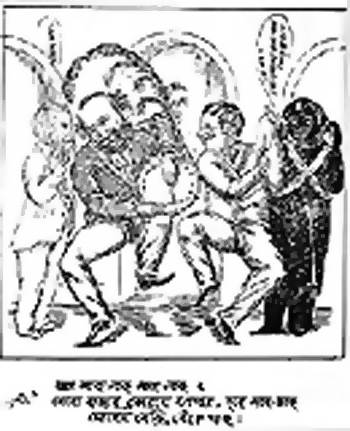
The microform collection at the archive has now reached a total of 577 original negative microfilm rolls 100ft./35mm of about 820,000 pages of Bangla periodicals and books, including major Bangla periodicals on science, society, literature and regional history. Most of the periodicals on microfilm are from the collections of the Bangiya Sahitya Parishat, the Konnagar Public Library (estd. 1854, Konnagar, Hooghly), the Mohiary Public Library (estd. 1886; Andul–Mouri, Howrah) and a few private collections. We also acquired about 300 early textbooks published by Fort William College, Srirampur Baptist Mission, School Book Society and other institutes of learning in colonial Bengal and a few volumes of periodicals form the private collections of Indranath Majumder, Uttara Chakrabarti and Amit Ranjan Basu.
With microfilming we also began digitising documents belonging to one of our collaborators, the Roja Mutthiah Research Library of Chennai, to facilitate easier access, wider dissemination and better preservation of the master–negatives.
Visual Archive:
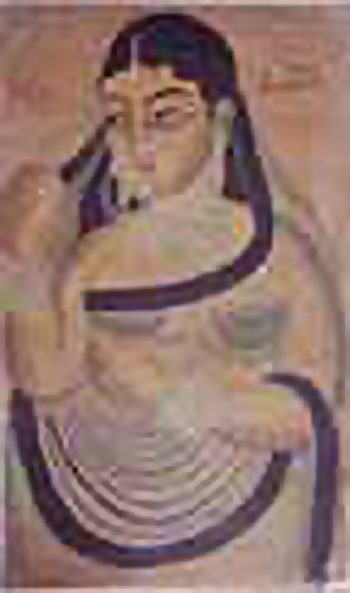
As we microfilmed Bengali printed texts, primarily periodicals from the mid–19th to the first decades of the 20th century, we became interested in 1996 in accessing a parallel body of pictorial and photographic genres from the same region and period and developing the collection as an adjunct to the microfilm archive. It is as a composite collection of texts and images that the archive today seeks to conserve and create a new repository of sources on the cultural history of modern Bengal.
Our prime interest lies in recovering this visual material not merely as ‘art’ but also as ingredients of social and cultural history. Thus, works of both ‘elite’ and ‘bazaar’ painters have been documented with equal emphasis, as have visuals of varying and uneven aesthetic merit alongside canonical works. Popular paintings and prints, new varieties of religious and mythological imagery, journal illustrations and cover designs, commercial art–work and advertisements in the middle–class press, early studio and family photographs, as well as ‘high’ art — all this material has been sought out from different private Collections in Calcutta and brought together in the archive through a collection of transparencies and negatives. The visual archive consists now of nearly 14,000 images, covering a variety of paintings, prints, illustrations, advertisements, commercial design and photographs, produced by local artists and photographers of Bengal over a period stretching from the 1840s to the 1990s.
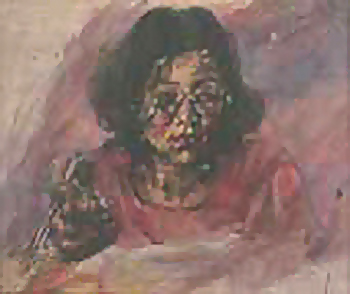
The main sources for the visual archive have been private and family collections in Calcutta. An extraordinary and eclectic range of imagery from the period exists in the city outside institutional sites in these little–known individual holdings, for which we have no records, lists or inventories. The CSSSC’s archive project was propelled by the urgent need for the collation and documentation of this material, to put together a visual record of a lost world of images out of fragments that lie dispersed in many hands. Where commercial art or family photographs are concerned, we are dealing with items that have hardly been considered collectible and have survived largely by accident as family or institutional memorabilia. The CSSSC’s archive has made it a point to bring into its scope such under–valued ephemeral imagery alongside the more well known genres of paintings and photographs.
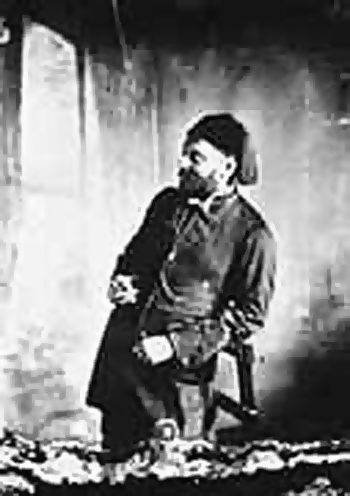
The core of the collection in 1996 came from our initiative to preserve early popular visual cultural components in Bengal, so the archive first copied the legendary collection of Radha Prasad Gupta from which it acquired about 200 19th century Battala prints, Kalighat patas, European lithographers’ work and many more. We also accessed early oil paintings and academic works of art from the private collections of Nandalal Kanoria, P.C. Kejriwala, Chitrakoot Art Gallery and many others who generously opened their collections to us. To preserve some examples of the work at the Government College of Art and Craft from its inception till the early 20th century the archive copied a number of paintings and prints from an exhibition of ex–teachers’ and students’ work, titled Legacy. During the period when Amitabha (better known as Siddhartha) Ghosh, a well–known historian of technology, was attached to the Centre we were able to frame our approach to photographic documentation and to access many collections. We began with family photographs from Siddhartha Ghosh, then those from the collections of Sevati Mitra, Debasis Bose and others.
Barun De gifted about 2000 original photographs from his family album. We also documented photographs taken by Parimal Goswami from the private collection of Himanish Goswami, and many by Kamakshi Prasad Chattopadhya, and by Ahmed Ali, a renowned Calcutta–based professional who captured several important moments in the development of the Calcutta metropolis through his lenses. Another significant collection of over 2000 photographs is of Bengal temples taken by Hitesranjan Sanyal and David McCutchion, which was gifted to the archive by Manaswita Sanyal and proved a valuable primary source for scholars working on temple architecture or the history of architecture in general.
History of Advertisement in Bengal:
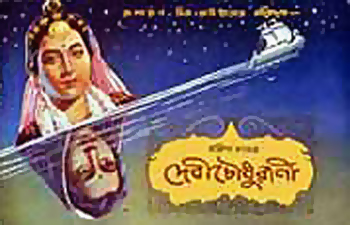
The ongoing documentation of Bangla advertisements from 1800–1950 began with support from IFA, Bangalore. So far the archive has acquired copies of many early 19th century Bangla advertisements samples of posters, handbills and labels of various consumer products, advertisements published in periodicals and journals etc. Some significant additions to the collection are the digitally retrieved and stored sketches of Kafi Khan, early Bangla Cinema promotional pamphlets in their original form from the private collections of Gautam Bhadra and Prabir Mukhopadhyay, and copies of all major gramophone company promotional literature of 1930s, 40s and 50s from the collection of Barada Gupta.
After the IFA project was completed we got another grant from SEPHIS to carry on the work of documentation for a further two years starting from December 2002. In this second phase the archive is documenting an interesting collection of old billboards from Parimal Ray, a huge range of film–posters, match–box labels, book covers and other publicity material.
Private Papers and Special Collections:
Some private papers have recently found accommodation in the archives. Though we are interested in acquiring such collections and some potential donors are also keen to house their collections at the archive for better maintenance and access, lack of adequate infrastructure and space limits our ability to take them in. The archive has housed only a few such sources. The private papers and correspondences of Shivnath Shastri, Bijaychandra Majumder, Priyanath Bhattacharya, Madhusudan Rao, Hemlata Sarkar and their extended families have been acquired from Sevati Mitra. We also have some early 20th century history textbooks, some rare books on regional history, and the private papers of the historian Jadunath Sarkar from his family with a great deal of personal and business correspondence. An interesting collection of rare fiction for children from the 1930s and 40s has been acquired from Prof. Arun Dasgupta. The private papers have been classified and sorted and are awaiting final documentation and publication of the catalogues. The special collections will be housed in the new Resource Centre, from where scholars can access them in the near future.
The Birendra Kishore Roy Chowdhury (henceforth B.K.R.C.) collection was acquired through the kind cooperation of his daughter Dr.Rani Ray who between 2012 and 2016 handed over the collection to the CSSSC for digitisation and preservation. The collection as its stands is in digital format and consists of the following.
1. Books in Bangla, English and Hindi.
2. Journals and Periodicals in Bengali, English and Hindi.
3. Note books of compositions and notations in Birendra Kishore Roy Chowdhury’s hand.
4. Ephemera in the form of souvenirs and promotion brochures and publicity material of music associations.
5. Birendra Kishore Roy Chowdhury’s index of the books and publications he possessed. Several of these are not available in the CSSSC’s digital collection.
The collection has been organised by the CSSSC and catalogued in a way that arranges the existing material under specific folders. In the case of the note books, it appears that Birendra Kishore himself adopted a scheme of classification and arrangement – this is clear from the index preserved in the notebook identified as Birendra Kishore Sangrahita Bishaysuchi in Pdf manuscript _No_4, Dhrupad and Kheals of Dakhina Charan Sen, p.36 of 42.
Please click the link to view the catalogue.
Documentation and Dissemination:
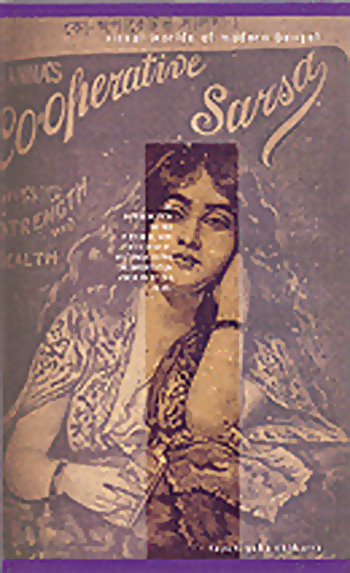
The Centre has undertaken a systematic publication programme of writings in old Bengali periodicals from the archival holdings, under the series title Samayiki. The first volume in the series, Bijnan o Samaj (edited by Pradip Kumar Bose and published by Ananda Publishers, Calcutta in 1998), has been published; work on two other volumes titled Griha o Paribar and Prajukti o Bijnan is in progress, and an English translation of the first volume is awaiting publication. A descriptive catalogue of the periodical holding at the archive acquired till 1998, A Guide to the Hitesranjan Sanyal Memorial Collection, compiled by Abhijit Bhattacharya and published by the Centre in 1998 is one primary entry point to the textual collection at the archive.
Work on an updated edition of the same is in progress. The earlier guide is available in PDF format To access the complete guide please follow the link. To see the index of Bangla periodicals at the archive of the Centre please follow the link. For wider dissemination the archive organised an exhibition of a selection of visual materials from the archive, Visual Worlds of Modern Bengal in collaboration with Seagull Media Resource Centre at the latter’s gallery from 1 March to 3 April 2002. An introduction to the visual documents at the Centre’s archive was published on that occasion. The illustrated book authored by Tapati Guha–Thakurta and published jointly by the Centre and the Seagull Books in 2002 titled Visual Worlds of Modern Bengal: An Introduction to the Pictorial and Photographic Material in the Documentation Archive of the CSSSC.
At present the archive is in the process of preparation of a searchable electronic database of all the archival documents and expected to be completed by next year. On completion the database will be added to the online public access catalogue system. Terms of setting a collaborative programme for wider access is in progress with Center for South Asia Libraries, Columbia University and University of Chicago for preparation of a comprehensive database of available vernacular literatures from West Bengal and Bangladesh.
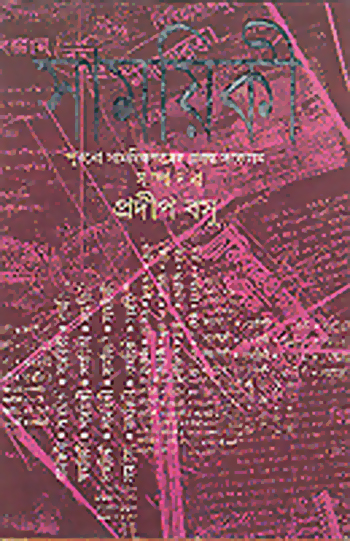
Exhibition of Visual Materials from the holding of the archive of the Centre, March 1 – April 3, 2002:
VISUAL WORLDS OF MODERN BENGAL: SELECTIONS FROM THE DOCUMENTATION ARCHIVE OF THE CSSSC
Part I: Paintings, Prints and Commercial Art (March 1–16)
Part II: Photographs (March 19–April 3)
The Centre curated this exhibition of selected materials from the visual archive in March – April 2002, and also published an introduction to the pictorial and photographic materials at the archive by Tapati Guha–Thakurta jointly with Seagull Books (Visual Worlds of Modern Bengal: An Introduction to the Pictorial and Photographic Materials in the Documentation Archive of the CSSSC, 2002). The exhibition was held at the gallery of the Seagull Arts and Media Resource Centre, 36 C, S.P.Mukherjee Road, Calcutta – 700025. The exhibition and the book were funded by the Asia Centre of the Japan Foundation and the ENRECA programme of DANIDA.
The exhibition placed on display a selection from the diverse material documented in the visual archive of the CSSSC. The extensive and wide range of images necessitated the division of the exhibition into two parts, each containing between 90 and 100 exhibits, each covering broadly the same timeframe. Together the two parts of the exhibition were able to feature nearly 250 of the items in the CSSSC’s visual archive.
Part I of the exhibition was devoted to non–photographic pictorial and print genres covering the period from the mid 19th century to the mid 20th century. It was divided into the following main themes:
The Changing Art of the “Black Town”
Kalighat paintings and Bat–tala prints
Lithography, oleography and the new print culture
Mythological oil paintings
Academic Training and the New Commercial Art
The Government School of Art
Illustrations and journal reproductions
Advertisements, cinema and gramophone booklets, and the rise of commercial design
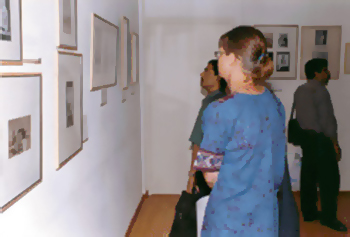
Modern Art in Bengal
Works of a selection of modern Bengali artists, running from the early academic phase through the nationalist movement of the early 20th century into the various modernist trends of the 1940s and 50s.
Part II of the exhibition was devoted entirely to photographs from the archive, covering the period from the late 19th century into the 1970s. Here, the exhibits were categorised as follows:
Portrait Photography
The early studios
Amateur and family photography in the early 20th century
Professional photography and public personalities, 1940s–1960s
Images of Calcutta
The city in early colonial photography
The city in the mid and later 20th century
Industrial Photography, 1940s–1960s
Advertisement and Commercial Photography, 1940s–1960s
Architectural Photography
Studies of the temples of Orissa and Bengal, 1960s
Profiles of Pioneering Amateurs and Professionals
As a parallel to the display of a selection of modern Bengali artists, this section featured the works of some of the region’s most talented photographers, ranging from the works of the self–trained Maharaja Birchandra of Tripura of the 1880s and 1890s to the works of two exceptional woman photographers of Calcutta of the 20th century, Annapurna Datta and Debaleena Majumdar.
This exhibition was the first major publicity event organized by the Centre around its archival project, and it proved to be tremendously successful and was extensively reported in all the major newspapers and local television channels in Calcutta. There were over 1500 visitors to the exhibition, which included experts, scholars and students as well as a large popular viewership. It made the CSSSC’s visual archive collection known to a wide section of the city’s intellectual, art and media world. One of its great benefits have been the many offers and inquiries that have followed from private collectors, artists and photographers in the city who wish to make their collections available for documentation in the CSSSC archive. The interest of students and researchers in this material has also grown since the exhibition.

